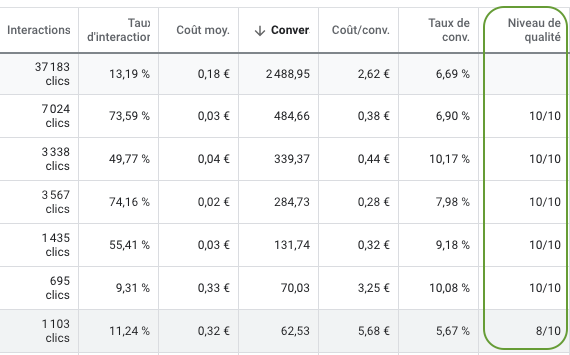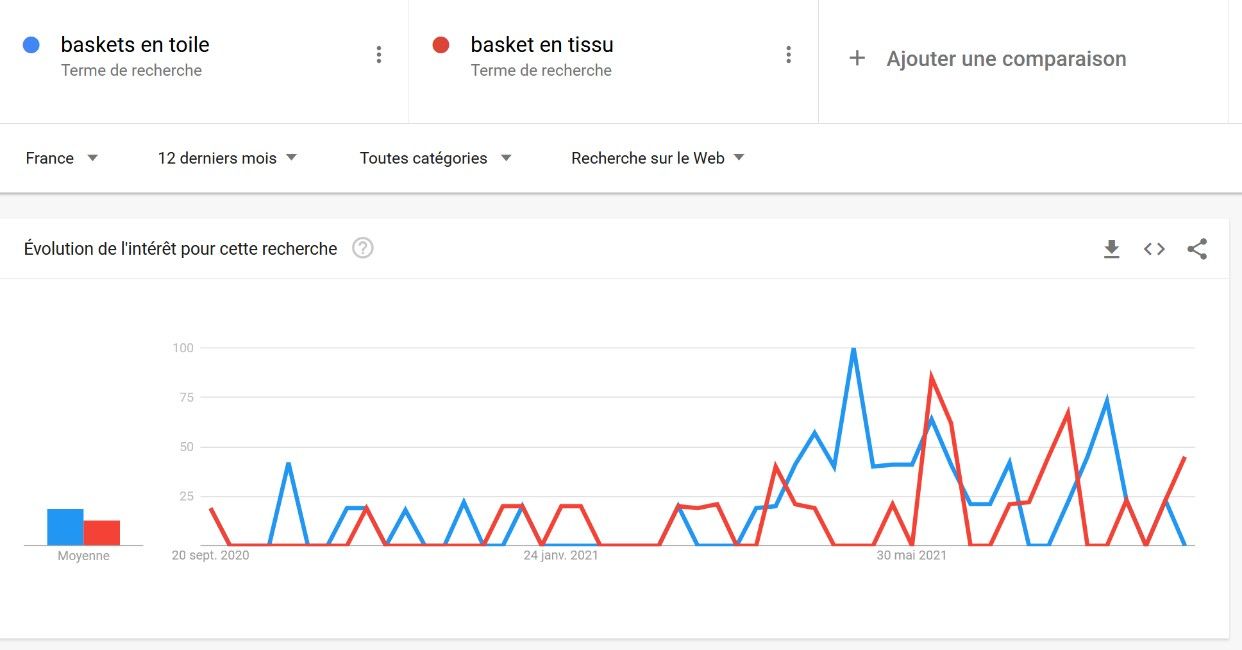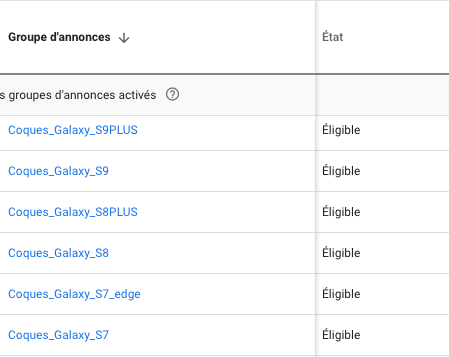Want to optimize the performance of your Google Ads campaigns? Increase your sales without increasing your expenses? To do so, you need to improve your Quality Score. Discover our four-point checklist to boost your performance.
What is the Google Ads Quality Score?
First of all, for the uninitiated, Quality Score is Google’s evaluation of your SEA campaigns. This score looks at the quality of the user experience, from reading your ads to clicking through to your site’s landing pages. You can also find Google’s definition of the google ads Quality Score here.
The Quality Score can range from 1 to 10, with 1 being the lowest and 10 the highest. You can view it on your Google Ads dashboard.

Essentially, the Quality score (or Google Ads quality level) is an indication of how your ads and landing pages benefit consumers. To understand how it’s determined, there are three main factors that influence the score:
- **CTR (Click-Through Rate): how likely is it that someone will click on your ad when Google displays it?
- Ad relevance: does the ad meet the needs expressed in the targeted keywords? Does it make sense for the ad to appear when someone searches for a particular keyword?
- The quality of the landing page: does the information on the landing page correspond to what the ad is proposing, and vice versa?
These three points give you a good indication of the steps you need to take to optimize your campaigns, i.e. :
- Optimizing CTR
- Improve the relevance of your ads
- Offer your visitors a quality experience on your landing pages
- … and we’ll give you one last tip for optimizing your ads
How can you optimize the CTR of your Google Ads to improve your Quality Score?
CTR estimates the probability that someone will click on your ad when it appears for one of your chosen keywords. It assumes that the search term corresponds exactly to the targeted keyword. This probability is expressed as a status:
- Above average
- Medium
- Below average
The first two cases mean that there’s no significant problem with the expected CTR, even if it’s obvious that an above-average CTR will have a better chance of converting.
However, a below-average CTR is clearly problematic. In this case, it’s essential to modify the ad text associated with this keyword as quickly as possible (in particular, by repeating the keyword more often).
Let’s take the example of a men’s shoe salesman targeting a customer looking for sneakers. His ad group might contain the following keywords: white sneakers, city sneakers, leather sneakers, suede sneakers…
A poorly written ad would say:
Marcel’s shoes
Visit our online store to discover a wide variety of shoes and benefit from a 50% discount!
Note that this ad doesn’t contain any of the relevant keywords, which means that the surfer who typed the queries detailed in the ad group is unlikely to click on them.
Here’s what a more attractive ad might look like:
Les souliers de Marcel – City and sport sneakers
Leather, fabric or suede sneakers: discover our range of white or colored sneakers, in a wide variety of materials.
Promotion on white sneakers: get 50% off our leather, fabric or suede sneakers.
This example shows how useful it is to create two or more ads per ad group. You can then incorporate more than one targeted keyword in each ad to improve your CTR.
Please note: in addition to working on your ad text, you can also refine your keywords to improve your expected CTR. Consider removing keywords that people aren’t really looking for, or add a wider variety of keywords to your ad groups by performing a keyword diagnostic. For example, for online stores, semantic analysis to identify the highest volumes of queries by product type is highly recommended.

How can you improve the relevance of your Google Ads to increase your quality score?
The second essential point for improving your Google Ads Quality score is to consider the relevance of your ads. The objective here is to know to what extent the message of your ads corresponds to the keywords they target.
Again, there are three possible statuses for ad relevance: “Above average”, “Average” or “Below average”.
Using the keyword groups targeted by Les Souliers de Marcel Boutique (white sneakers, dress sneakers, leather sneakers, suede sneakers…), an ad with a status of “Below Average” might say:
Marcel’s shoes
Visit our boutiques located in the heart of Paris, to sport the capital’s finest looks.
This ad isn’t relevant enough, because it doesn’t include any of the keywords on which the store bids, and their content doesn’t deal with sneakers. To improve the relevance of this ad, simply reformulate it by adding these keywords.
Les souliers de Marcel – The most beautiful sneakers in Paris
Visit our Paris boutiques to discover our sneaker models in leather, suede or fabric. White or colored, the choice is yours!

How can I improve the user experience on my landing pages to increase my Quality Score?
When you’re trying to improve the Google Ads Quality Score of your campaigns, you need to analyze the relevance of your landing pages in relation to the expectations of users who have typed in the keywords you’re targeting.
Here are some useful questions to ask yourself:
- How useful is my landing page to someone who clicks on the ad?
- Is my landing page well organized?
- Does its editorial content relate to the targeted search terms (keywords)?
- Is my landing page clear?
- Do the products I offer match my target keywords?
Returning to the Souliers de Marcel example, we can examine one of the enhanced ads above:
Les souliers de Marcel – White sneakers
Discover our selection of white sneakers for men, in leather or fabric.
Suppose someone searches for “White sneakers”, looks at your ad and clicks on it… only to be redirected to a landing page featuring colored sneakers.
The page doesn’t match this person’s search term, which means it’s of no use to them.
Or, suppose someone clicks on your ad that matches their search term, but they’re bombarded with pop-ups or the page takes too long to load.
These factors are likely to affect their user experience and cause them to leave your landing page.
With this in mind, make sure your landing page is well organized and contains everything the visitor needs. We recommend including useful information, related links, a clear view of the shopping cart and contact details.
Our final tip for improving your quality score: group your keywords by semantic field.
When you set up your campaigns and integrate your ads and keywords, you create ad groups in which they will be placed. To do this, it’s best to use several logical ad groups (sorted by semantic field) rather than grouping all your keywords together in a single ad group.

The methodology we recommend is as follows: group your keywords into similar categories, then create relevant ads for each category.
For example:
Ad group: sneakers
- Fabric sneakers
- Leather sneakers
- Suede sneakers
Ad group: Richelieu
- Men’s Richelieu
- Black Richelieu
- Richelieu with buckles
Ad group: Moccasins
- Leather loafers
- Blue loafers
- Men’s moccasins
In short, improving your Quality score in your Google Ads campaigns helps you maximize the performance of your advertising budget. By optimizing your ads according to the three criteria that influence the quality score: expected click-through rate (CTR), ad relevance and landing page experience, you’ll achieve better results and control your spending.
*CTR is a ratio indicating how often people who see your ad actually click on it. CTR can be used to evaluate the performance of your campaigns (choice of keywords and relevance of your ads).



